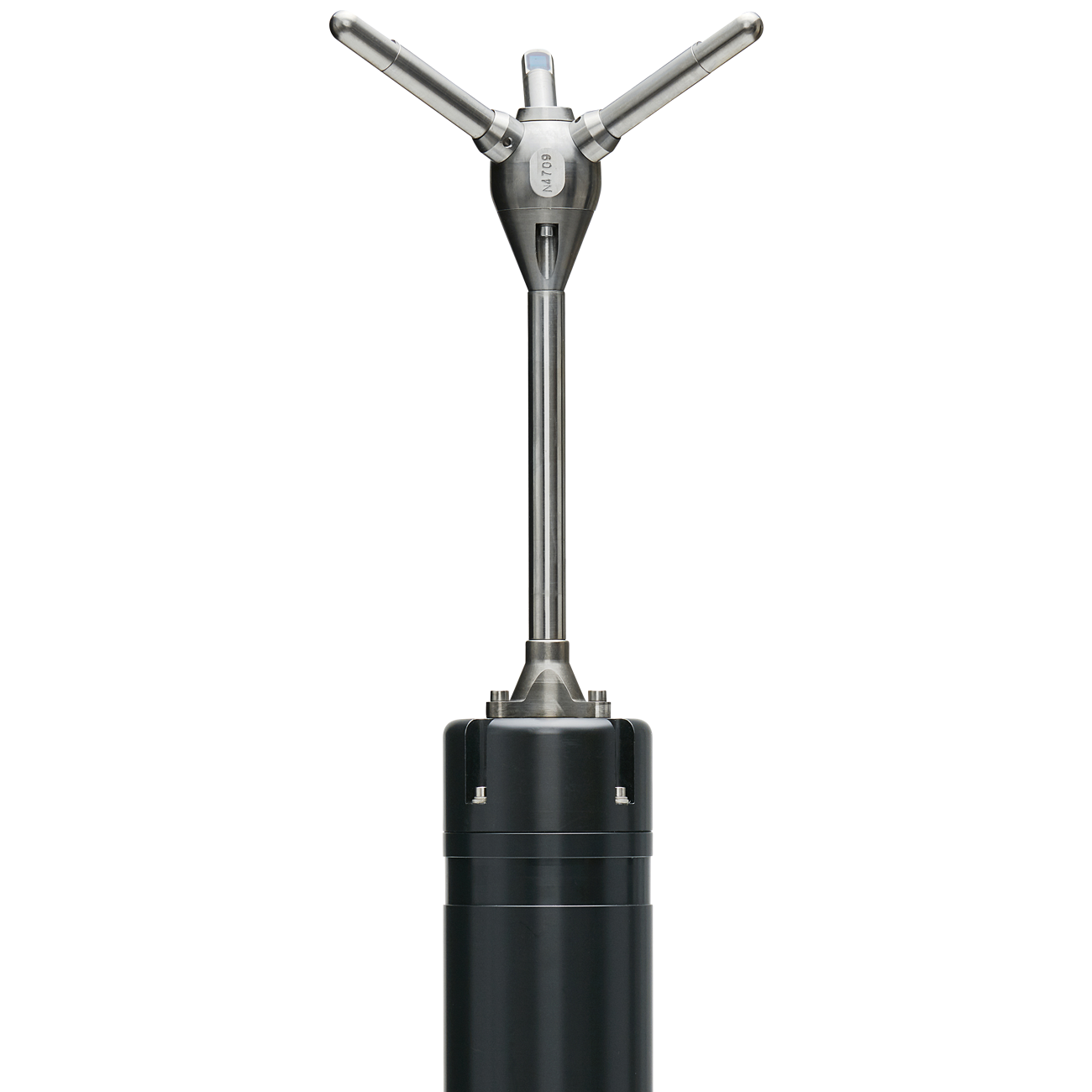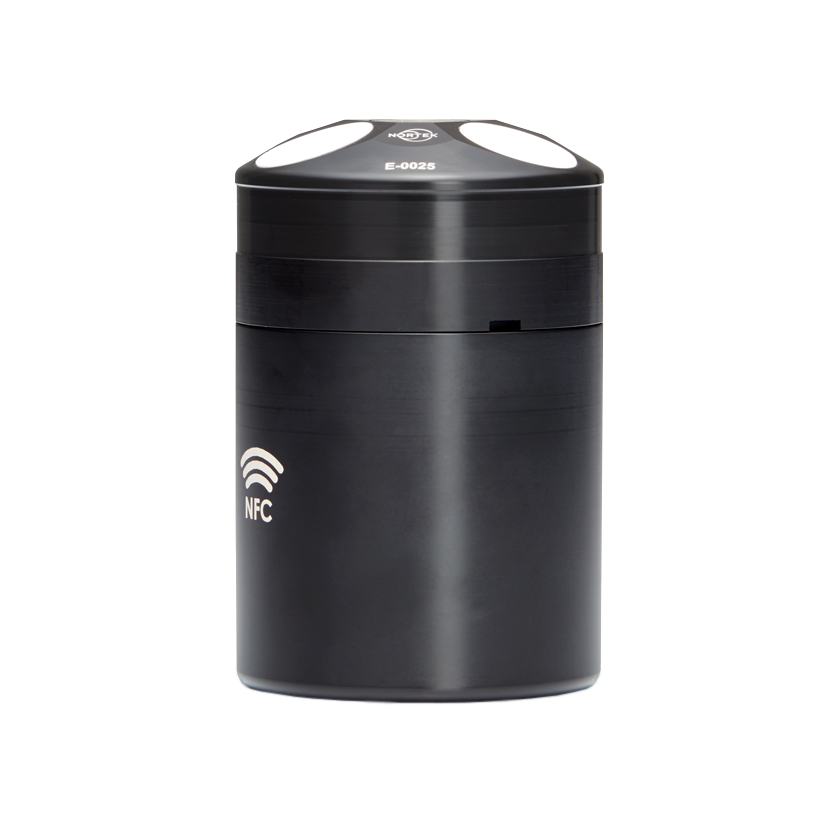
Investigating coral recovery on the Great Barrier Reef with acoustic instrumentation
- User stories
Synopsis
Challenge
Coral bleaching and storm events, which are increasing with climate change, can create vast areas of coral rubble on the Great Barrier Reef. Coral rubble pieces are the skeletons of dead corals. If rubble remains in one place for a long time, new, healthy corals can effectively recruit onto it and the reef can recover naturally; but if the rubble is moving around a lot due to waves and currents, new corals living on it can die, hindering recovery. Rubble stabilization interventions can be deployed in areas where the rubble is prone to frequent movement, but we don’t know where those areas are.
Solution
Using a Vector velocimeter to measure water flow, researchers correlated the movement of rubble pieces with flow disturbances to determine how much hydrodynamic energy it takes to move coral rubble.
Benefit
Armed with information on what characterizes sites that could benefit from coral rubble stabilization techniques, the team will develop maps of the Great Barrier Reef that show priority areas for such interventions, i.e. areas in the ocean where rubble is moving too frequently for natural coral recovery to occur.
“With climate change, we’re going to see more frequent and intense storms and cyclones, as well as coral bleaching events,” says Dr. Tania Kenyon, Postdoctoral Researcher in the Marine Spatial Ecology Lab at the University of Queensland in Australia.
“This means we’re going to have a lot more damage to our reefs in the future, and also smaller windows of time between those disturbance events for recovery.”
Dr. Kenyon’s work with the team at the Marine Spatial Ecology Lab (MSEL), headed by Prof. Peter Mumby, focuses on coral rubble, the skeletons of dead coral resulting from storms and coral bleaching events, which kill and break apart healthy corals.
Coral rubble stabilization – a reef restoration technique for climate change adaptation
Rubble is a natural part of any coral reef, but with increasing frequency and severity of storms and bleaching events, scientists are predicting an increase in rubble on reefs and lower recovery times. Rubble stabilization is a reef restoration technique that aims to secure loose pieces of rubble in the hopes of creating a stable environment for coral recruitment.
Dr. Kenyon is part of the Rubble Stabilisation Subprogram team, comprising scientists from the University of Queensland and Queensland University of Technology, including Dr. Daniel Harris, who is also working on rubble movement and stabilization. The subprogram is part of the Reef Restoration and Adaptation Program (RRAP), which has brought together Australia’s leading coral reef experts to create an innovative suite of safe, acceptable interventions to help the Great Barrier Reef resist, adapt to and recover from the impacts of climate change. The RRAP is funded by the partnership between the Australian Government’s Reef Trust and the Great Barrier Reef Foundation.

Dr. Kenyon and Dr. Harris are currently working on the Great Barrier Reef under the RRAP Rubble Stabilisation Subprogram, focusing their work on three islands: Great Keppel Island (Wop-pa), One Tree Island and Heron Island. Most of the work takes place at the University of Queensland’s Heron Island Research Station.
The research aims to quantify rubble mobilization thresholds, i.e. how much hydrodynamic energy it takes to move a piece of coral rubble in different conditions.
Working to aid coral reef recovery during climate change
“Reefs are very important: millions of people around the world rely on them, they’re important for coastal protection and they’re one of the most biodiverse habitats in the world,” says Dr. Kenyon.
Coral reefs support more species per unit area than any other marine environment and are key to many human development goals, such as supporting sustainable fisheries, discovering new species that can be used in new medicines and bringing in tourism money to support local economies.

However, climate change is threatening reefs. Warming ocean temperatures can cause coral bleaching, a process in which the symbiotic algae called zooxanthellae living in the corals are expelled by the corals. Without these organisms, corals are unable to gather food or oxygen and will die. Additionally, the increasing severity and frequency of storm events will cause corals to break apart.

“Anything we can do to boost the resilience of coral reefs to help them navigate that warming will improve their chances of surviving into the future,” says Dr. Kenyon.
Quantifying hydrodynamic thresholds for coral rubble mobilization using the Vector ADV
Dr. Kenyon and Dr. Harris are using a Vector velocimeter to measure flow velocity over existing rubble beds throughout the Great Barrier Reef on each of the three islands.
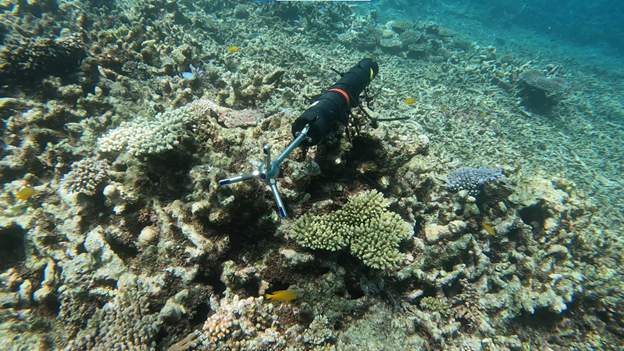
“What we’re doing with the Vector is looking at rubble mobilization thresholds. We’re using it to monitor the hydrodynamic environment while also looking at the movement of rubble pieces,” Dr. Kenyon explains.
“From previous work I’ve done in the Maldives, we’ve found movement thresholds of about 0.3 to 0.4 m/s. We’re furthering that work now on the southern Great Barrier Reef.”
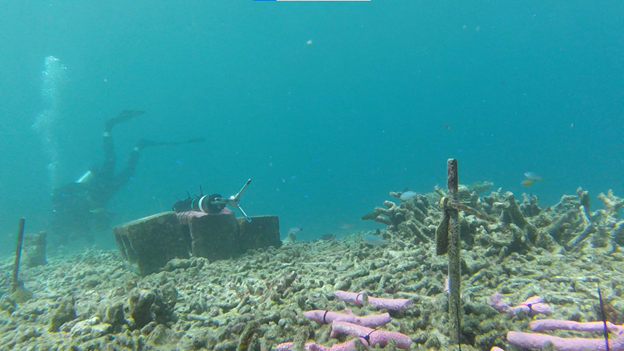
Dr. Kenyon and Dr. Harris will quantify the degree of rubble movement for a given hydrodynamic environment by looking at the distance rubble has traveled and its direction over the reef slope and reef flat and correlating these observations with data from the Vector.
Understanding the sea state throughout the water column above the coral reef
The team also used the Eco ADCP to profile the water column at the Heron Island site. This will give information on the sea state throughout the water column above the reef site. A combination of the near-bottom data from the Vector and water column data above the reef from the Eco will help to characterize the site and conditions driving rubble mobilization.
Size and shape of the rubble affects coral reef rubble movement
From previous work, Dr. Kenyon found that the size and shape of the rubble affects rubble movement.
“The smaller the rubble, the less branched it was, the more easily it moved,” she says. “If the pieces were quite large and branched, they’re more likely to become interlocked and have a much higher threshold of mobilization.”
Dr. Kenyon’s previous work also found that over time, the threshold of mobilization increases.
“Rubble might move a lot when it’s first created, and then it might settle into a more hydrodynamically stable position over time,” she says.
“We’re now furthering that [previous research], trying to fine-tune those estimations of rubble movement and in different environments as well."

Coral rubble stabilization as a restoration technique
This work will contribute to broader-scale research that identifies areas on the Great Barrier Reef where rubble is likely to persist due to excessive movement. This information will be used to determine which sites are best suited for and most in need of rubble stabilization intervention efforts.
Rubble stabilization techniques include structures that are attached to the substrate to pin rubble down or corral it, including biodegradable meshes, rock piles, rebar grids and structures such as MARS Reef Stars. If rubble is stable for long enough, it can then be naturally bound together by sponges, coralline algae and other marine organisms into a stable surface, like bricks and mortar.
As well as investigating rubble mobilization, Dr. Kenyon is investigating these natural binding rates. Rubble pieces are experimentally stabilized by attachment to a steel grid, which is then secured out on the reef survey site, and picked up months later to see how well bound the pieces are.

Determining best intervention strategy for a given degraded coral reef site
Quantifying rubble mobilization thresholds allows for the determination of whether intervention is worthwhile.
“This research will be useful in determining, OK, we’ve got this site, it’s been damaged, it’s got this much rubble on it and it’s in this kind of location, what should we do?” explains Dr. Kenyon.
“It will help managers to know, is it actually worth intervening in this environment, or is it just too high-energy and that intervention will just get ripped out with the next hydrodynamic event?”
Developing maps of the Great Barrier Reef to identify candidates for intervention
“The end goal of the Rubble Stabilisation Subprogram at this stage is to develop some maps of the Great Barrier Reef and identify areas where rubble is likely to be generated, as well as areas where rubble is likely to persist,” says Dr. Kenyon.
“We’re wanting to identify those hotspots of rubble persistence, and that information will be used for informing managers on where we should really be focusing our attentions in terms of rubble stabilization interventions for reef recovery.”
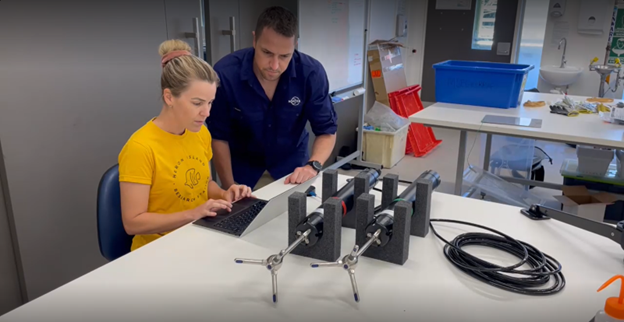
RRAP aims to provide reef managers and decision-makers with an innovative suite of safe, acceptable and cost-effective interventions to help protect the reef from the impacts of climate change, in conjunction with best-practice reef management and reducing carbon emissions.
“The next phase is actually implementing these interventions,” says Dr. Kenyon. “How are we going to implement them on the reef, and most importantly, implement them at scale? The Great Barrier Reef is over 3000 reefs over an area of over 2000 km. We need to be able to scale these interventions and prioritize reefs that are most in need.”
Identifying the best coral restoration techniques for reefs worldwide
While Dr. Kenyon is currently working on the Great Barrier Reef, she is hopeful that the outcomes of this research and the other research being done can be used to identify the best coral restoration techniques for reefs worldwide.
“Depending on what kind of reef it is, what kind of depth, what kind of zone, what kind of exposure, we could make some kind of predictions based on the information that we’re finding about the rubble persistence [and movement] risk on that reef. Then people have a better idea of [if they should] go in and intervene to help the rubble along in its recovery.”
The ability to make these prioritizations on reefs globally will maximize the results of coral restoration efforts. Dr. Kenyon hopes these research efforts will contribute to helping reefs navigate the challenges of climate change.
“There is hope for our reefs, if we give them the best fighting chance,” says Dr. Kenyon.
“If we bolster their resilience and foster adaptation through various interventions, while also moving to clean energy, we can hopefully hold onto these crucially important ecosystems.”
